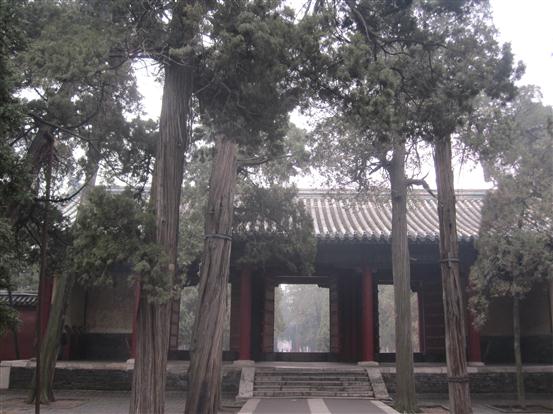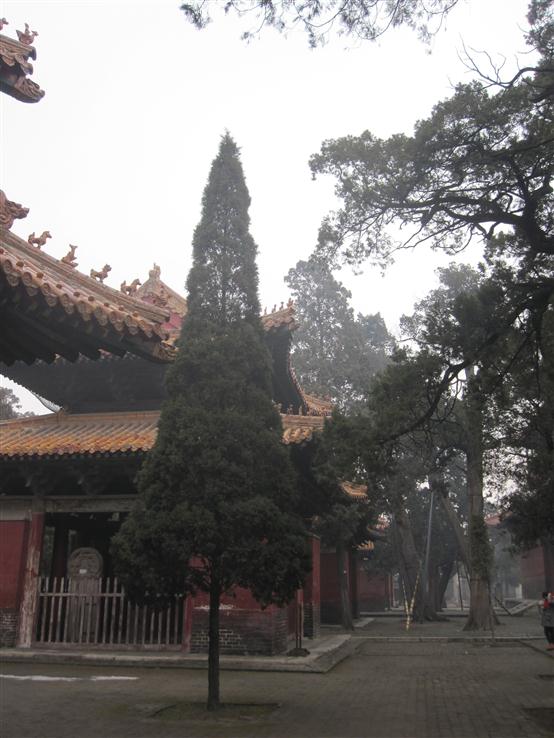A saintly palce of worship
Updated: 2012-02-10 16:36
By Ji Xiang (China daily)
|
|||||||||||
The Temple of Confucius was built as a place of veneration of the wise man as a saint. Among the many temples designed for the same purpose, it is the oldest and largest in the world. There are more than 100 structures of eight types, and more than 460 rooms. The temple was built and rebuilt during the Jin (1115-1234), Yuan (1271-1368), Ming (1368-1644) and Qing (1644-1911) dynasties and the Republic of China era. The 1,172 stone tablets carrying inscriptions, which are replete with historical and aesthetic value, are an important part of the temple. There are more than 1,200 well-preserved old trees in the temple, which greatly add to the ancient feel. The temple is the frequent venue for ceremonies and rituals.

Archways in the front of the temple.

Old pine trees in the yard.

A mythical animal bears a tablet of inscriptions.

Apricot Altar, where Confucius taught.

Dacheng Hall, the main hall of the temple.

Some of the pavilions in which tablets are housed.

A building on the side has ancestral rooms.

Tablets of Confucius' pupils.

Dragon pillars of Dacheng Hall.

The interior of Dacheng Hall.

Lubi Wall.
Today's Top News
President Xi confident in recovery from quake
H7N9 update: 104 cases, 21 deaths
Telecom workers restore links
Coal mine blast kills 18 in Jilin
Intl scholarship puts China on the map
More bird flu patients discharged
Gold loses sheen, but still a safe bet
US 'turns blind eye to human rights'
Hot Topics
Lunar probe , China growth forecasts, Emission rules get tougher, China seen through 'colored lens', International board,
Editor's Picks

|

|

|

|

|

|





